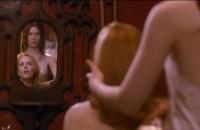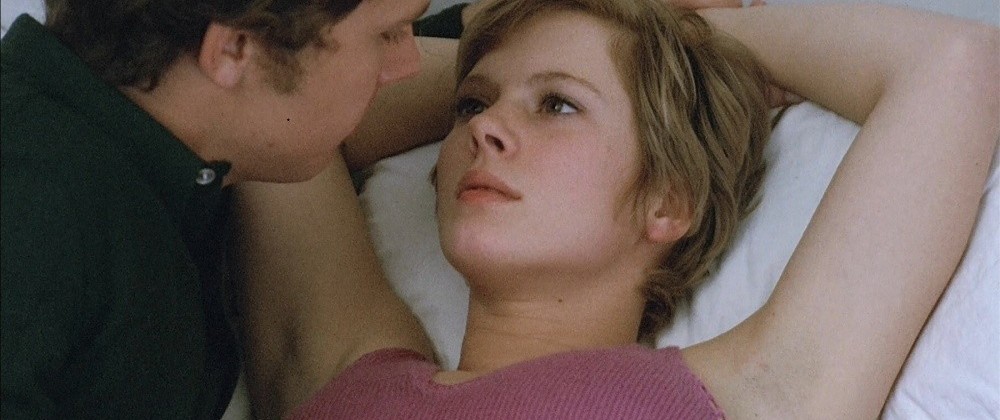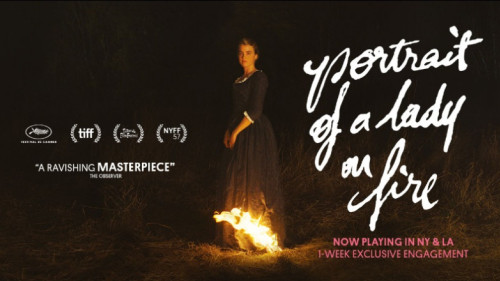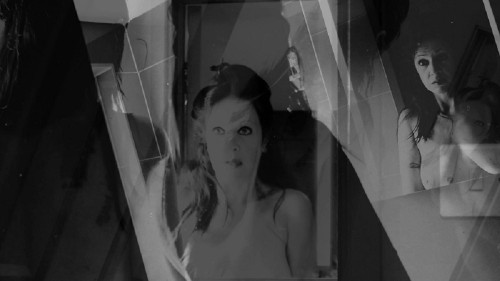Volume 19, Issue 11 / November 2015
Sex and Desire at the Cinema
In this issue
-

The Mordant Geography of Desire in Barbet Schroeder’s More (1969)
-

The Last Taboo: Necrophilia in Kissed and Nekromantik
-

Our Passion Is Our Task: Sexual Ethics in the films Splendor in the Grass And The Paperboy
Pleasure versus Virtue, an ongoing struggle
-

Stoker (2013, Park Chan-Wook): A Stylish Cocktail of Incest and Murder
-

Like a Charm
Movies That Put a Warm Smile on Your Face (but not sex)
This issue is a delayed sequel of sorts to the issue of two months ago, Volume 19, Issue 10, guest edited by David Hanley, entitled ‘Sexuality in the Cinema.” When it comes to cinema, whenever there is sexuality, the depiction of desire, in one way or another, is never far behind. This take on sexuality and desire begins with a review essay of More (1968), Barbet Schroder’s debut film, set at the height of the May 1968 student revolution and the ‘free-love’ sexual revolution. Its author Elaine Lennon tackles the film’s ambivalent depiction of directionless hedonism, sparked by the two central character’s diverging struggles to find personal expression through the desire for physical escape (the island of Ibiza), sexual freedom and heightened consciousness (drugs). As Lennon notes, “Desire for warmth is replaced by the desire for sex; the desire for sex is replaced by the desire for drugs; the desire for drugs replaces everything, even self-discovery.” Colin Arason, who also authored an essay in the previous issue on sexuality, tackles the taboo subject of necrophilia, as treated in diametrically opposed styles across the Canadian film Kissed, by Lynne Stopkewich, and the controversial German horror ‘erotica,’ Nekromantik, by Jörg Buttgereit. In Garrett’s rhyming review he slices together two films from different time periods, 1961 & 2012, that deal with how sexual mores touch upon social, political and ideological truths. The two films are also linked in that the sexual mores represented are set in historical periods thirty plus years prior to when the films were made (1961/1928, 2012/1969). Sexual desire becomes dark and very twisted in Korean auteur Park Chan-wook’s first English language film from 2013, Stoker. A solid cast (Nicole Kidman, Mia Wasikowska, and Matthew Goode) and mannered style from Park gives a modern twist to Hitchcock’s Shadow of a Doubt. Rounding out the issue, Graham Daseler returns us to a more wholesome place, ‘charming’ films. Daseler writes from a decidedly subjective position about films he finds ‘charming’. Although sex and charm are not incompatible, Daseler argues that explicitness where sex is concerned strips away an important layer of the charming film, mainly innuendo and symbolic expression of sexual desire. Charming films are often all about sex but without the sex. It is the desire for sex but disguised or cloaked by the production code, social mores, taste and style. (Donato Totaro, ed.)









